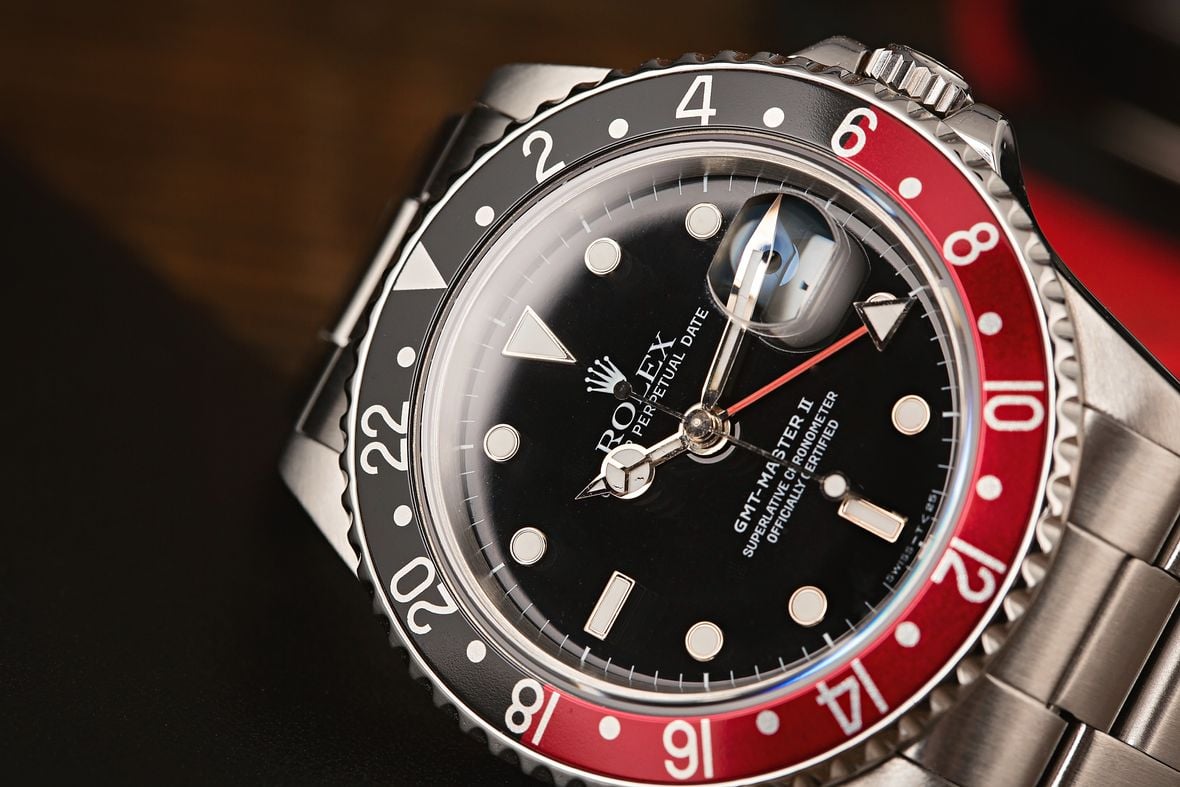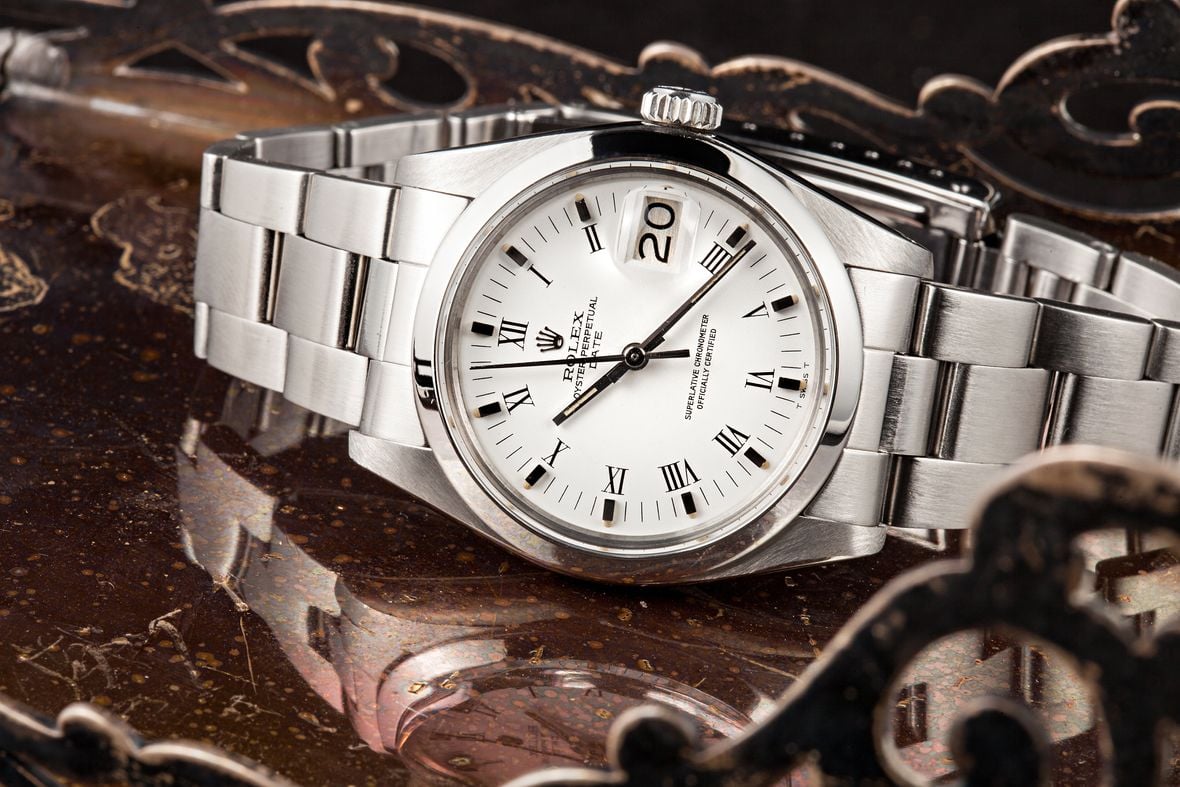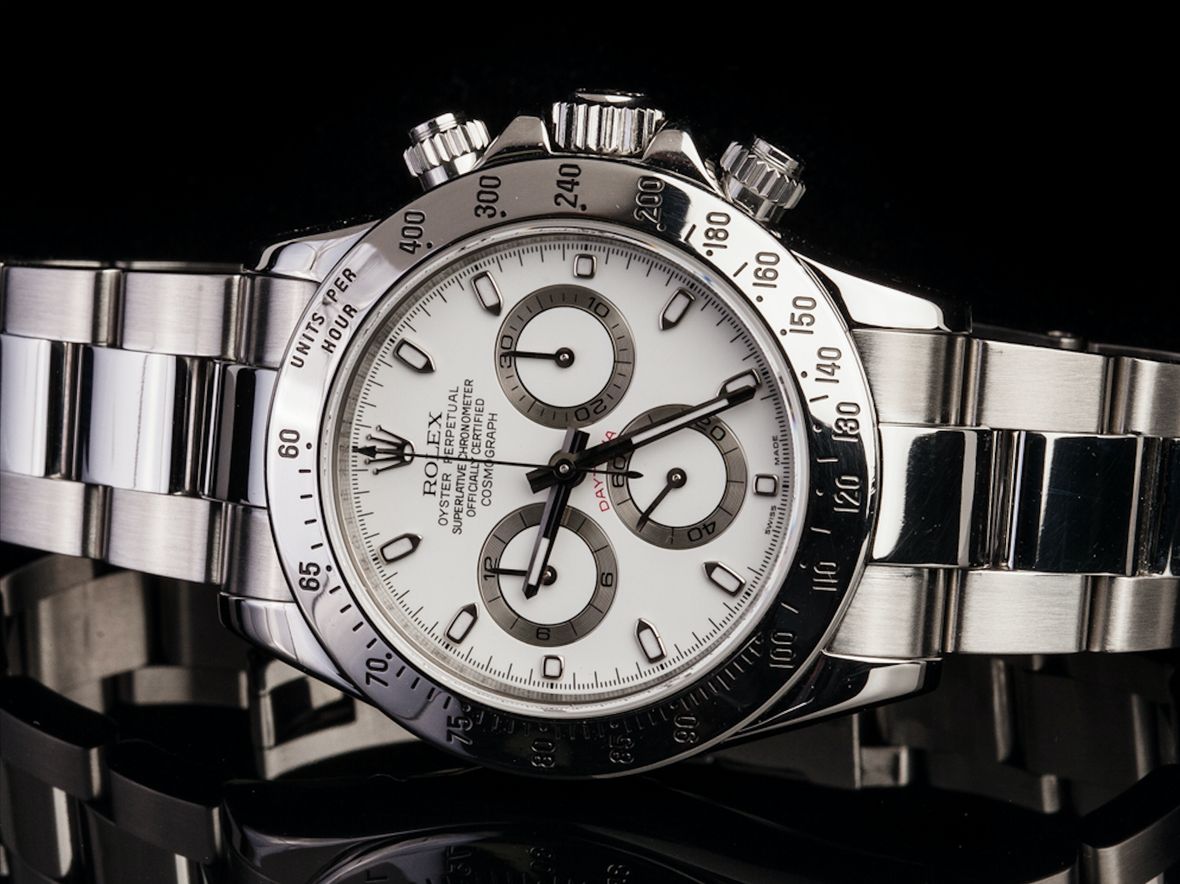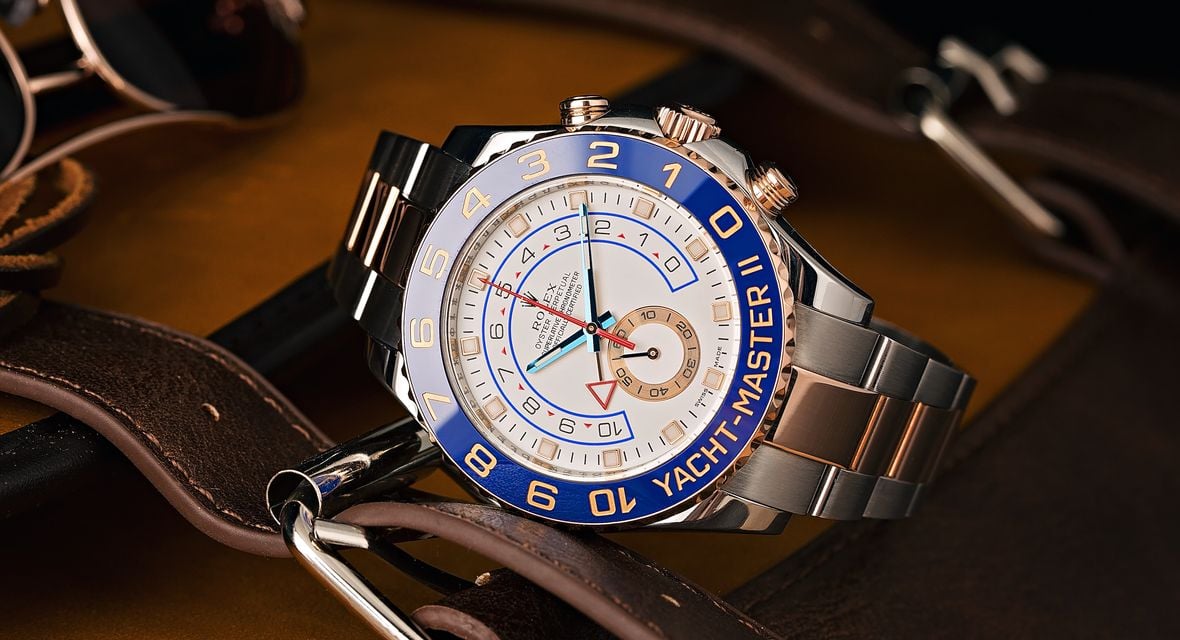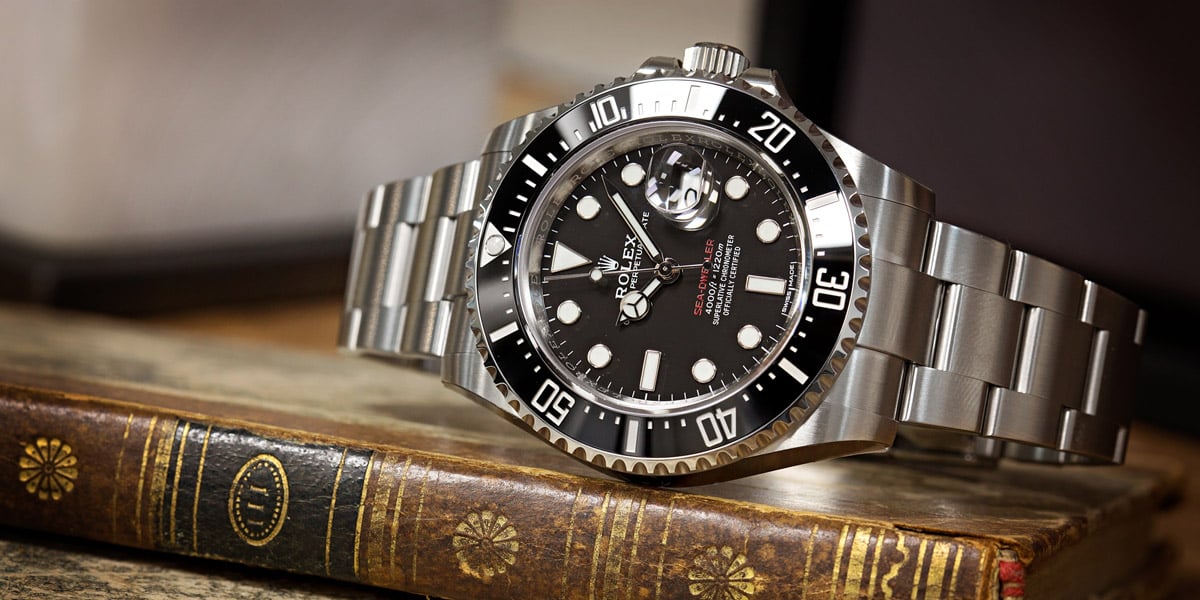Let’s face it. The ‘80s weren’t a pretty time for watchmaking – or for design in general, for that matter. That said, Rolex was never one to try and reinvent the wheel or throw out past design codes. It also didn’t suffer nearly as badly through the decade either, compared to many of the other brands in the industry. Sitting right at the boundary of what could be considered vintage Rolex watches, the various references from the 1980s often don’t carry quite the same cachet as pieces from the ‘60s and ‘70s; however, a number of incredibly important vintage Rolex watches first appeared during the 1980s, and they have become increasingly popular in more recent years.
What does this mean for collectors? Well, among other things, it makes for an entire decade worth of Rolex watches that are still more attainable than their older counterparts (at least for now). These 1980s Rolex watches will likely never quite catch up to quite the same levels of value and collectibility as their older counterparts, but as general interest in them (and prices) have been on the rise, they make for highly attractive options for those that want a vintage Rolex but who don’t want to necessarily invest as much as what is required to obtain one of the legendary blue-chip models from the earlier years of Rolex’s history. With that in mind, here’s a handful of Rolex models from the New Wave and Synth-Pop era of the 1980s.
1980s Rolex Watches
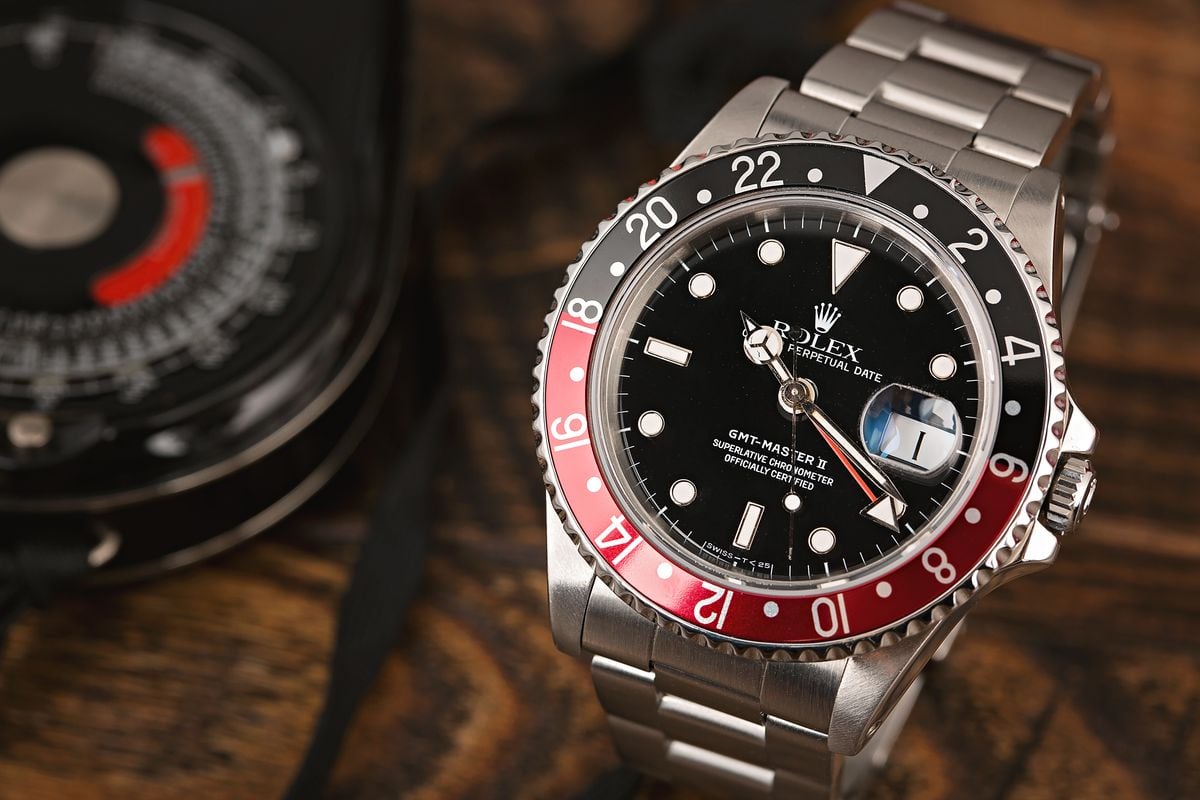
Notable Rolex Watches from the 1980s
– Rolex Submariner ref. 16800 and ref. 16803
– Rolex GMT-Master II ref. 16760
– Rolex Day-Date President ref. 18038 and ref. 18078
– Rolex Daytona ref. 16520 and ref. 16523
– Rolex Datejust ref. 16233 and ref. 16234
– Rolex Milgauss ref. 1019
Click here for our complete buying guide on Rolex Watches.
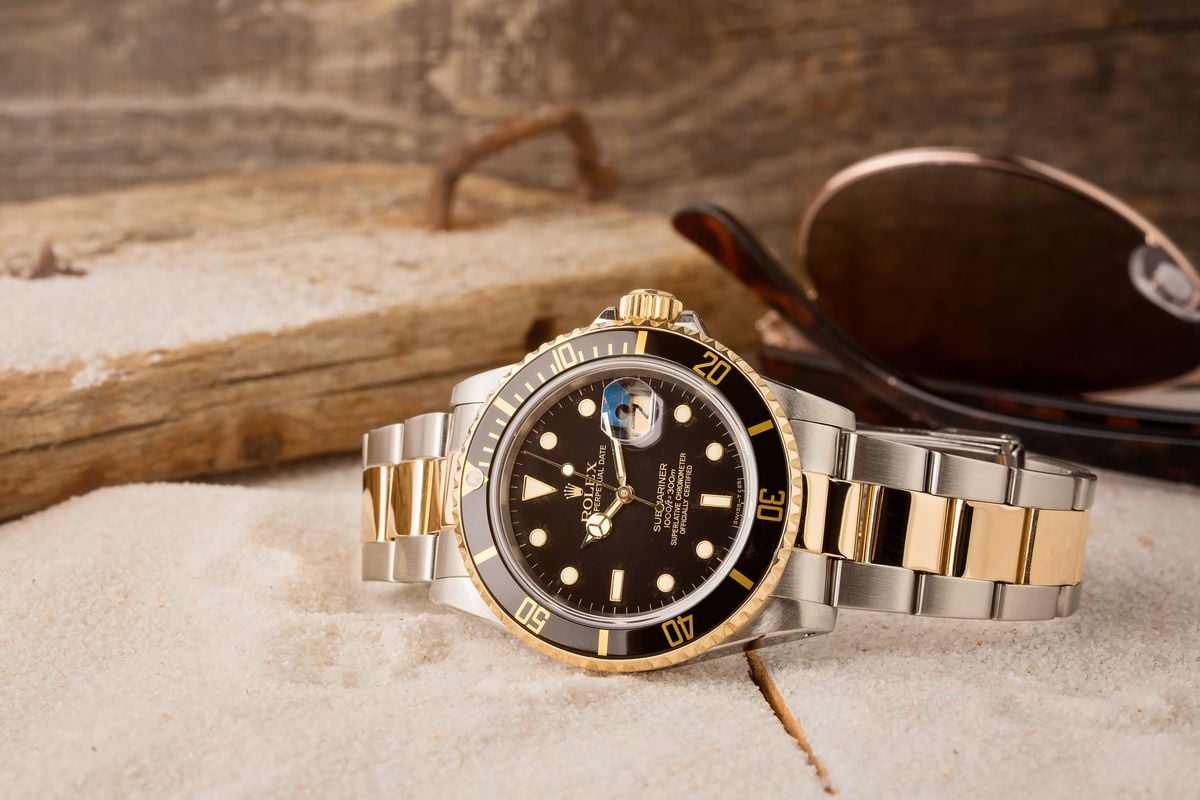
Rolex History Leading to the 1980s
Rolex introduced many of its pillar models during the 1950s, including the Submariner, GMT-Master, and Explorer. It was an era of incredible innovation and success for the company that had become a key player in the luxury watch industry. The brand’s professional series watches were among the finest on the market, offering unparalleled accuracy and durability.
That all changed in the 1970s when the global watch industry saw a considerable shift from mechanical watches to those powered by inexpensive quartz movements. Japan had risen through the ranks as the top watch producer, threatening to topple the entire Swiss luxury watch industry. The ASUAG group alone saw a sharp decrease in total production of 80% during this time. To compete, Rolex released their own collection of quartz-powered watches in the form of the Oysterquartz series. Through precise, well-made movements and classic Rolex styling, the company survived what has since become known as the Quartz Crisis of the 1970s.
The SWATCH Group
During this time, the SWATCH group was formed, merging the ASUAG and SSIH, including several heavy hitters in the luxury watch industry. Lead by Nicolas G. Hayek, the SWATCH group released the SWATCH watch, an affordable and highly precise timepiece intended to compete with the Japanese market. The merger of both groups, also known as the SMH Group by 1985, would prove to be a smart move as by the 1990s, it was one of the most successful watchmakers in the world and played a key role in saving the crippled Swiss watchmaking industry in the wake of the Quartz Crisis.
During that trying time, Rolex always pushed the boundaries, continuing to innovate and improve its mechanical calibers, despite creating its own quartz movements. The 1980s saw various upgrades to its movements, including the independent 24-hour hand within the GMT-Master II series and the release of the higher-beat calibers 3135 and 3135. The sapphire crystal also became a staple throughout the brand’s portfolio. The Submariner received a safer uni-directional timing bezel, and many sports watches made the transition to hour markers surrounded in white gold, marking the transition from classic vintage styling to the luxurious and modern aesthetic that now accompanies many of the brand’s models.
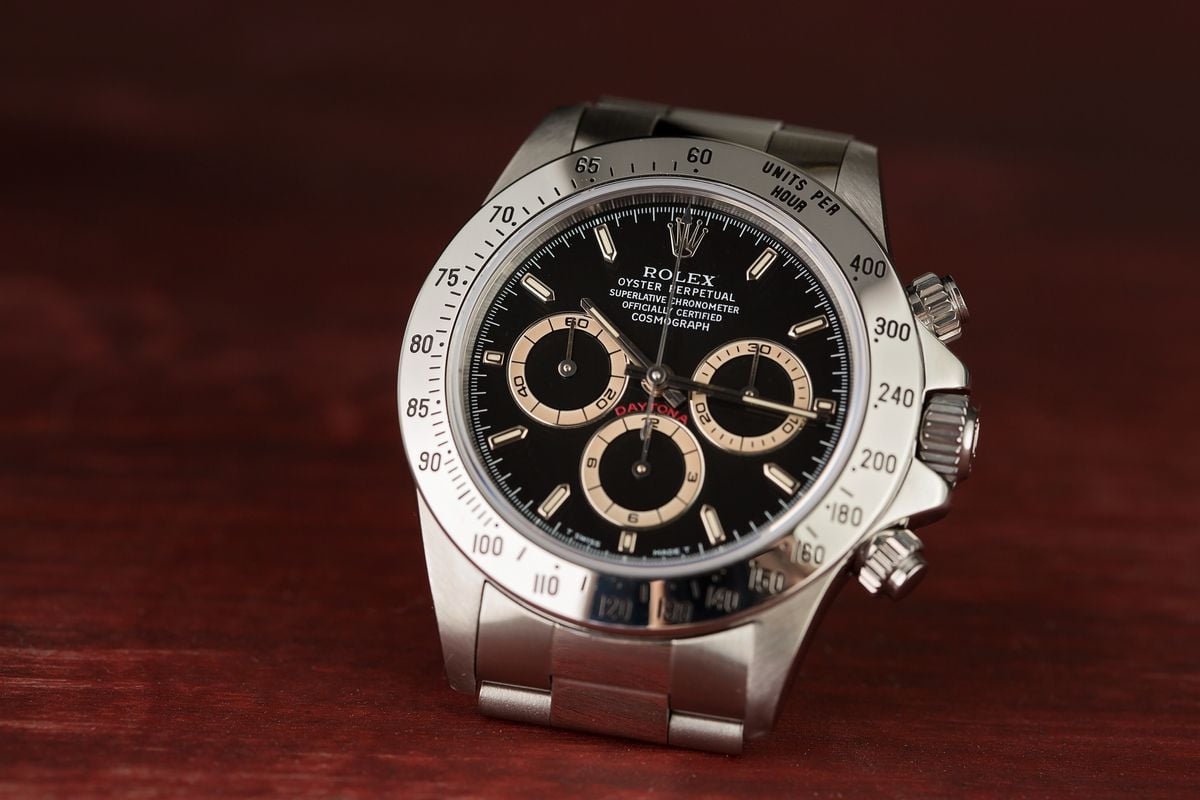
Popular Rolex Watches from the 1980s
For many watch brands, the 1980s were an era of rebuilding with few standout releases. However, for Rolex, the 1980s marked the introduction of a number of important models that are now celebrated by collectors and still held in high regard today.
Rolex Submariner 16800 – Transitional Reference
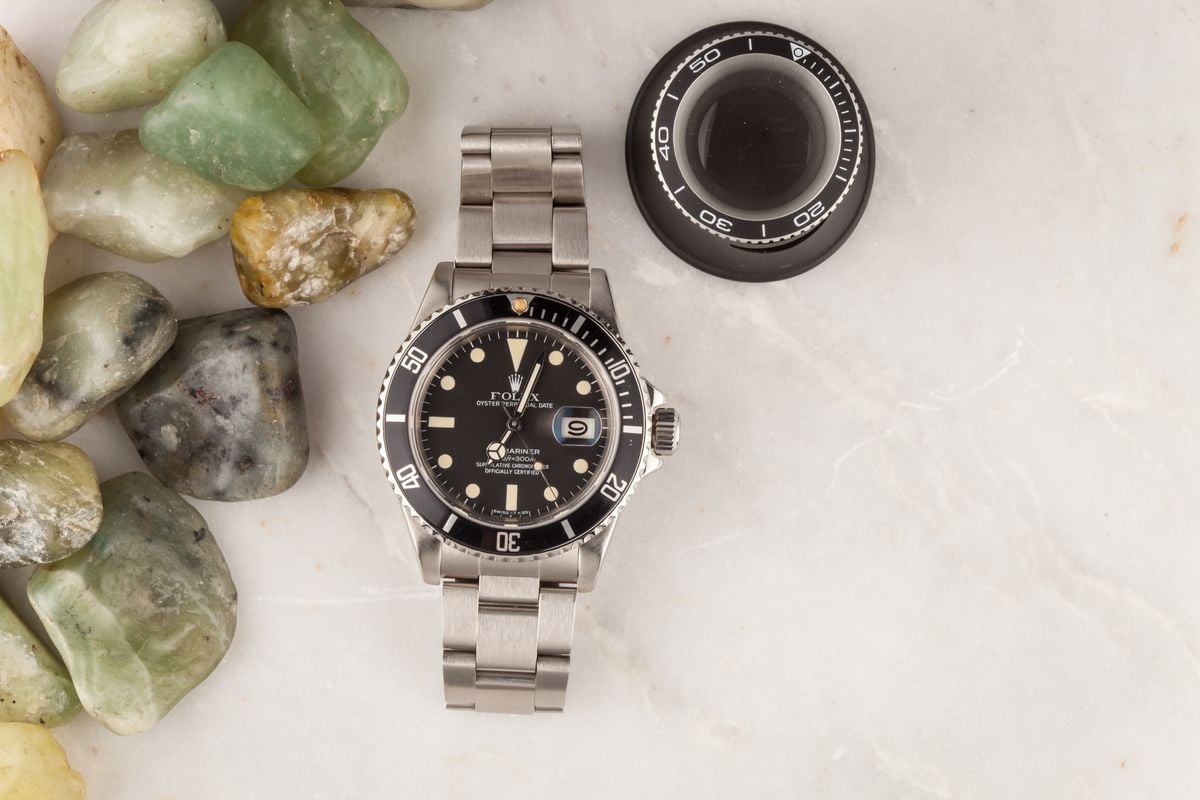
We are going to start our list with a classic Rolex Submariner since the ref. 16800 is one of those models whose relatively low pricing still confuses us. First introduced at the very end of the 1970s, in many respects, the ref. 16800 the best of both worlds for an ‘older’ Submariner. This reference is the model that updated the line to the quick-set Cal. 3035 and that also added a sapphire crystal to the collection for the very first time.
The ref. 16800 Submariner is a transitional model, and examples can be found with both matte and gloss dials with white gold hour markers. The model also falls into the window of use of tritium for the dial and hands, which ages with its own lovely character, often developing a rich and warm patina. This combination of modern and retro traits makes for a great daily wearer, plus you can still scoop up a good example for less than $10k.
Case Size: 40mm
Materials: Stainless steel
Dial: Matte black w/ printed markers; Gloss black w/ white gold markers
Bezel: Unidirectional, 60-minute timing scale, Black aluminum insert
Crystal: Sapphire w/ Cyclops magnification lens
Movement: Cal. 3035
Bracelet: Oyster Bracelet
The ref. 16800 plays an important role in the Rolex Submariner’s history, making the transition from vintage to modern. For around $10k, you can add one to your watch box – not a bad deal at all when you consider the price of similar vintage Submariner references.
Rolex GMT-Master II 16760 – Coke Bezel
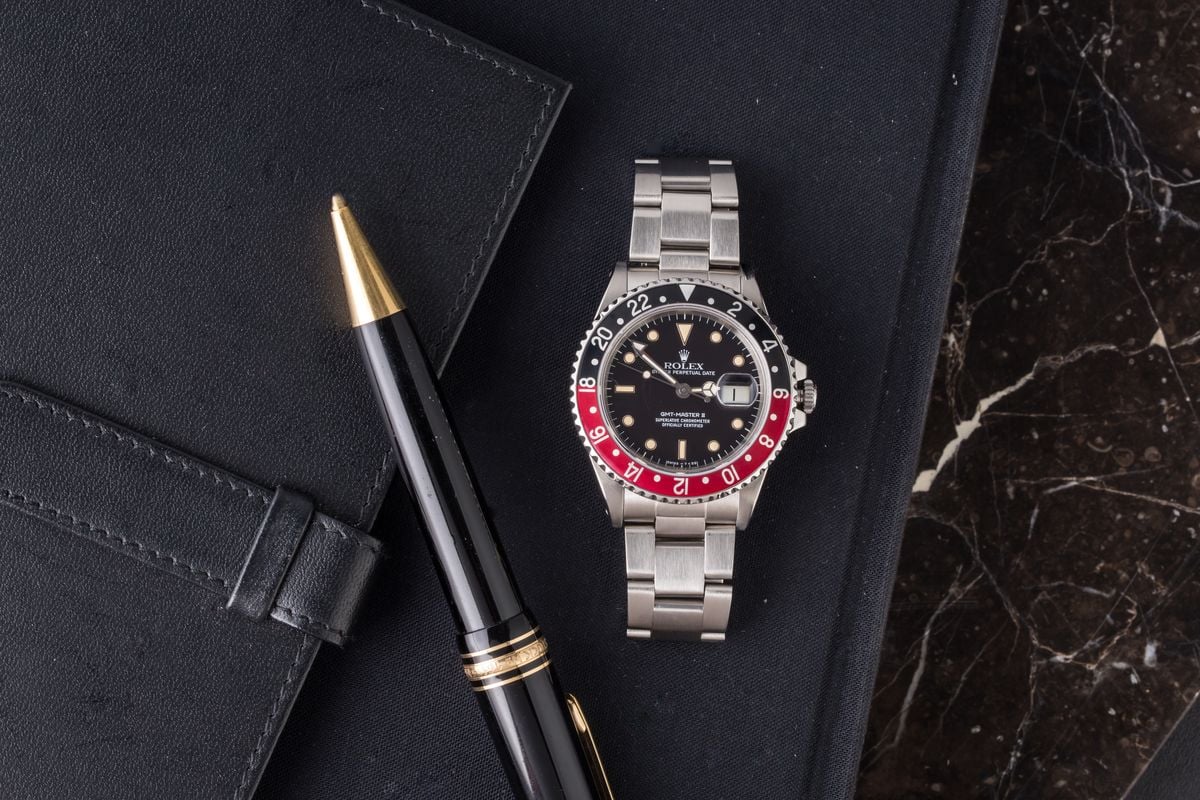
Another obvious choice for our guide to 1980s Rolex watches is the ref. 16760. In terms of fantastic things to surface in the watch world in the ‘80s, the Coke bezel GMT-Master II is one of the very few. That’s right, this bad boy was launched in 1983 and was the very first of the GMT-Master II models to feature the then-new Cal. 3085 movement.
The ref. 16760 GMT-Master II marked the dawn of the independently adjustable hour hands for Rolex. It was also the reference that became known as the ‘Fat Lady’ or the ‘Sophia Loren’ based on the slightly thicker case needed to house the new, more-advanced caliber. As the first reference in the series and the model that first introduced the red and black “Coke” bezel, the Rolex GMT-Master II 16760 is highly collectible.
Case Size: 40mm
Materials: Stainless steel
Dial: Gloss black w/ white gold markers
Bezel: Bidirectional, 24-hour GMT scale, Black and Red “Coke” aluminum insert
Crystal: Sapphire w/ Cyclops magnification lens
Movement: Cal. 3085
Bracelet: Oyster or Jubilee Bracelet
The reference 16760 ‘Fat Lady’ GMT-Master II was only produced for about five years between 1983 and 1988 and it was only ever offered with the option of a Coke bezel. Depending on the overall condition of the particular watch, you can add one of these to your collection for anywhere between $10k and $15k on the pre-owned market.
Rolex President 18078 – Bark Texture
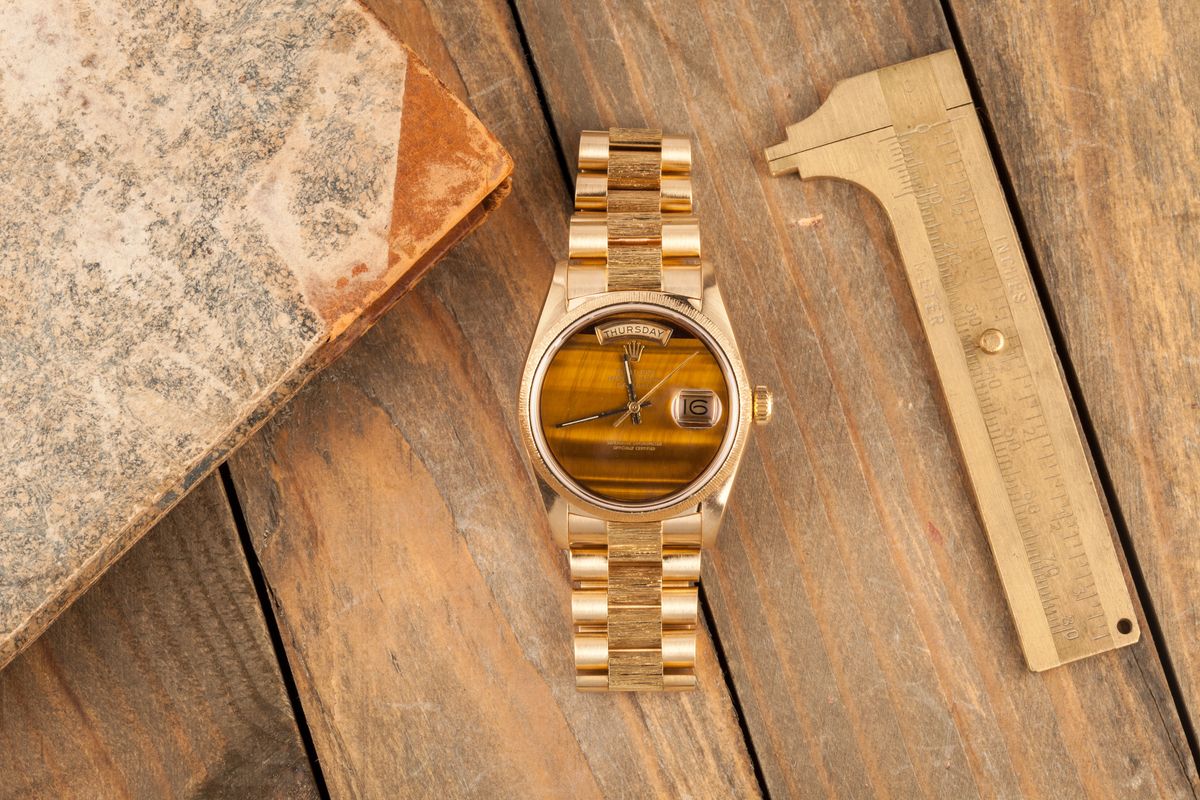
Although big and gaudy gold things were really a product of the ‘70s, a big statement piece equally had its place during the 1980s. For this occasion, there’s no bigger statement than a solid gold Rolex Day-Date, especially one with a Presidential bracelet with bark textured center links, matching bark textured bezel, and a Tiger’s Eye dial.
Like other stone dials seen in the Rolex catalog, part of this model’s appeal is the simplicity of its dial, completely devoid of any indices other than the applied crown and printed text. The reference 18078 first appeared in the late ’70s, and while it certainly is not the only reference to ever use this style dial, the solid yellow gold Rolex President is a watch that is very emblematic of the 1980s
Case Size: 36mm
Materials: 18k yellow gold
Dial: Tiger’s Eye stone dial (other options also available)
Bezel: Fixed, 18k yellow gold w/ “Bark” texture finish
Crystal: Sapphire w/ Cyclops magnification lens
Movement: Cal. 3055
Bracelet: President Bracelet
The bark-finish Rolex Presidential Day-Date in solid 18k yellow gold is typically listed for around $13k on the pre-owned market. With that in mind, the price can significantly be influenced depending on the style of the dial and the overall condition of the watch itself.
Rolex Datejust 16234 – Stainless Steel and White Gold
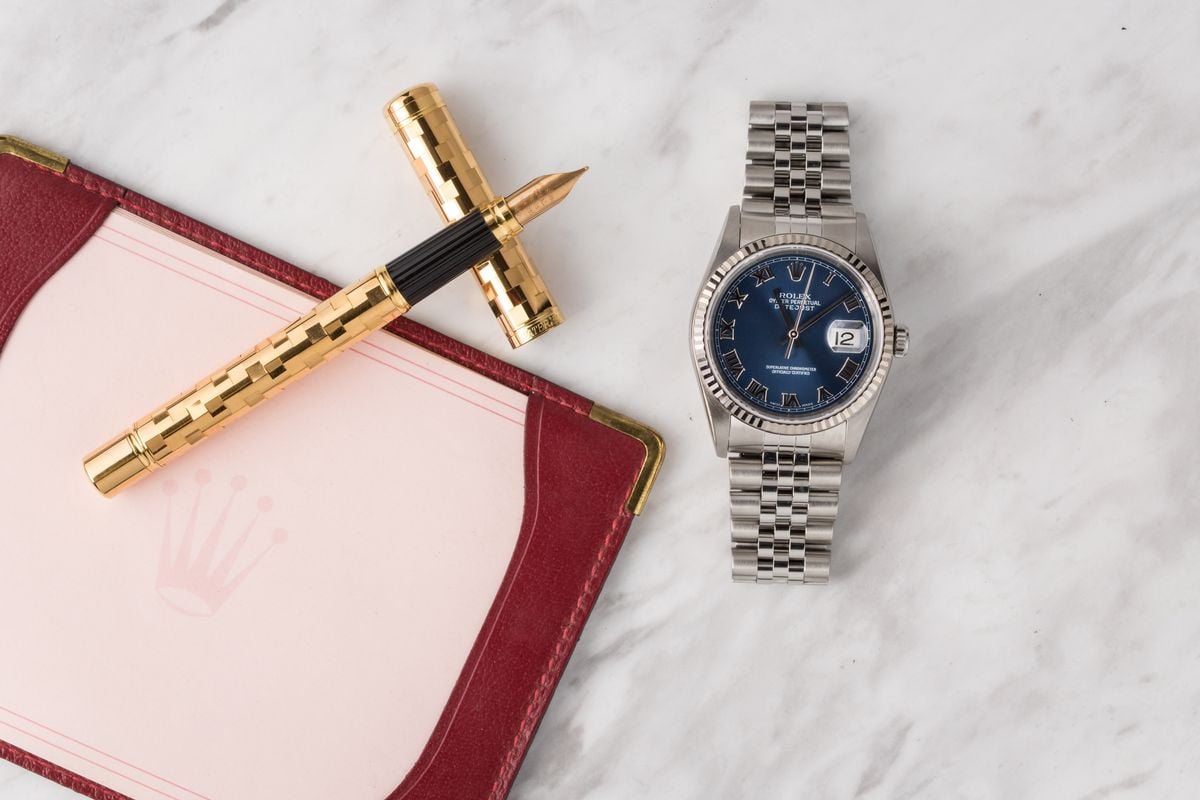
On the much more modest side of the coin, we selected the Rolex Datejust 16234 for the simple reason that it’s a prime example of something someone newer to the collecting hobby could pick up for themselves as a perfect “first Rolex” without breaking the bank. While the two-tone steel and yellow gold ref. 16233 is probably more emblematic of the era, the all-white metal finish of the reference 16234 offers a more versatile aesthetic that fits in perfectly with today’s trends.
Rolex isn’t one to just go with the flow, especially when it comes to trends. That’s why it’s not too surprising to see them doing their own thing, even as the rest of the luxury watch world moves towards making watches that anyone can wear, regardless of gender, and shrinking down men’s watches to smaller sizes. Rolex, on the other hand, is boldly bucking the trend by focusing on larger watches for men. It’s interesting to see how the Rolex watch men lineup is not just sticking to the classics but actually going bigger, showing that Rolex isn’t afraid to stand out and keep its watches in a class of their own.
Case Size: 36mm
Materials: Stainless steel and 18k white gold
Dial: Multiple dial options available
Bezel: Fixed, 18k white gold, Fluted style
Crystal: Sapphire w/ Cyclops magnification lens
Movement: Cal. 3135
Bracelet: Oyster or Jubilee Bracelet
The price of a Rolex Oyster Perpetual Datejust ref. 16234 is contingent on the watch’s condition, along with other factors such as the style of dial and bracelet fitted to the watch. The ref. 16234 often sells on the secondary market for around $5k or $6k, as the use of both stainless steel and 18k white gold allows the watch to maintain an affordable price point while also offering the luxury of precious metal.
Rolex Daytona 16520 – Stainless Steel
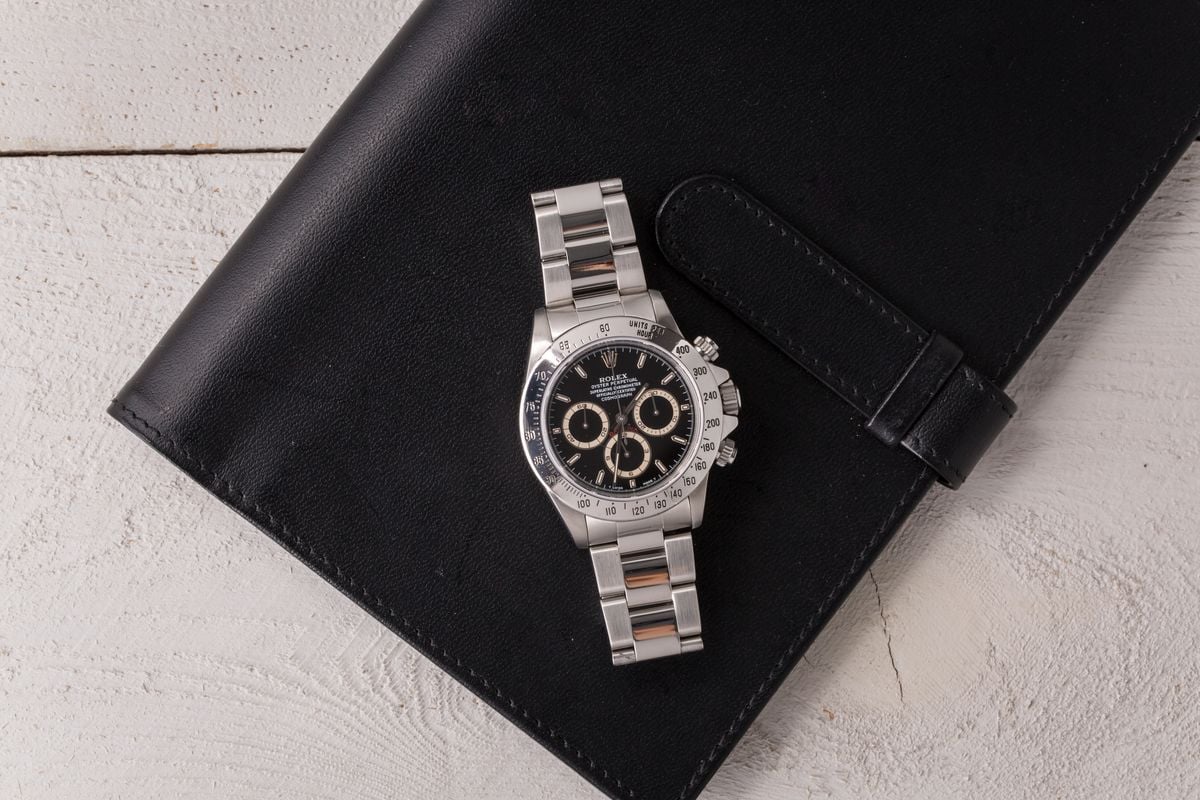
Another Rolex watch that first arrived in the 1980s was the brand’s first automatic winding chronograph, the Rolex Dayton reference 16520. First arriving in 1988 and featuring a self-winding movement that was a heavily modified version of the Zenith El Primero. Often referred to as “Zenith Daytona” watches due to their use of an outsourced movement, this generation of Daytona watches holds the distinction of being the last Rolex model to feature a movement that was not designed and built entirely in-house by Rolex.
Along with being the first automatic Daytona, this generation of Rolex Daytona watches also represents the first time that the brand’s collection of chronographs had been produced with a 40mm case size, along with the first instance of both crown-guards and sapphire crystals being featured on the collection. Rolex offered both two-tone and solid 18k gold versions of this generation of the Daytona, but it is the classic stainless steel ref. 16520 that many collectors consider the point in the collection’s history when Rolex’s legendary chronograph first started to take on its modern form.
Case Size: 40mm
Materials: Stainless steel
Dial: Black or White w/ white gold markers
Bezel: Fixed, Stainless steel Tachymeter scale
Crystal: Sapphire
Movement: Cal. 4030
Bracelet: Oyster Bracelet
Due to their important and noteworthy place in the history of the Rolex Daytona, reference 16520 watches typically sell for a bit more than their later-era counterparts with stainless steel bezels and in-house movements. As far as pricing for the Rolex Daytona 16520, most examples start out at around $22k on the pre-owned market and increase from there depending on dial color and overall condition.
Rolex Submariner 16803 – Two-Tone Steel and Gold
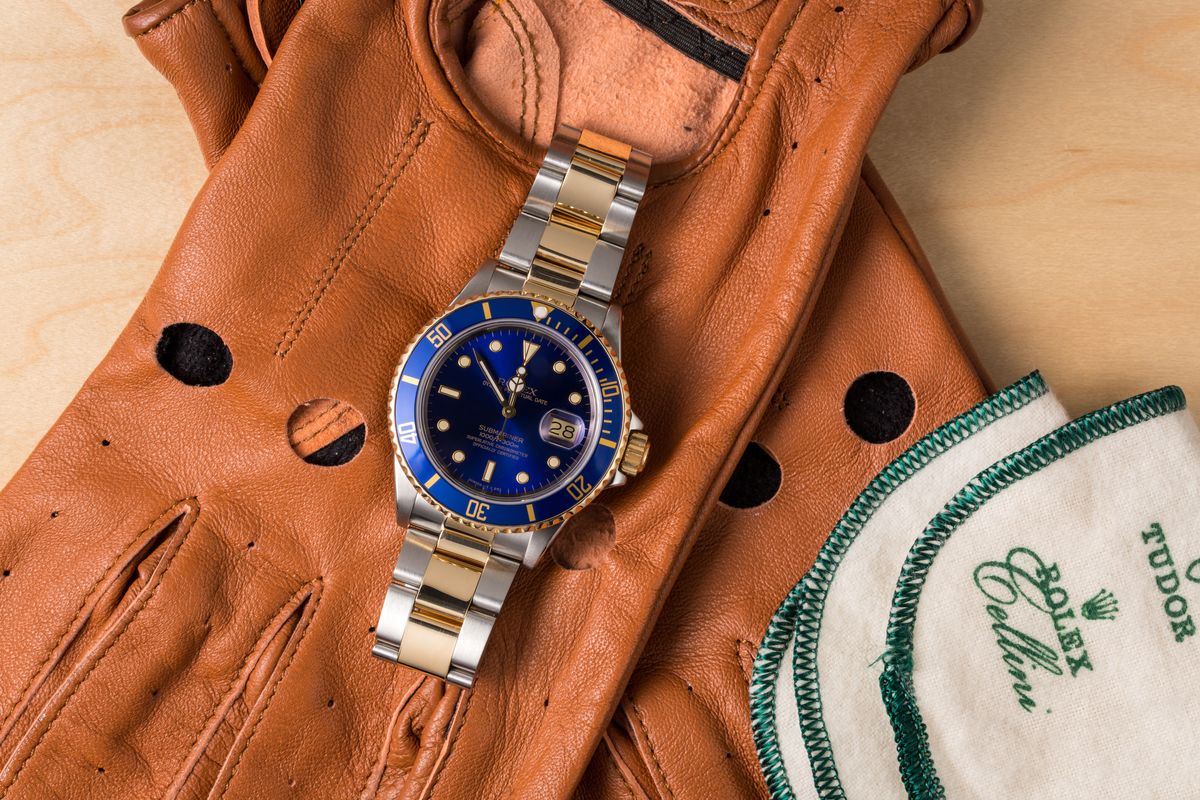
We couldn’t talk about the 1980s without also talking about two-tone watches, now could we? Technically speaking, the two-tone trend’s roots go back to the ‘30s, but it was in the ‘80s when the recession hit, budgets tightened, and the idea of more ‘affordable’ luxury goods really took hold in watchmaking. Those wanting a bit of flash for a bit less cash quickly took a shine to the two-tone trend, and Rolex was happy to deliver with its signature Rolesor finish.
The Rolex Submariner was one of many models to land in the two-tone pile, which was not all that surprising given that a solid 18k yellow gold model had appeared during the previous generation. In many respects, this move helped solidify the Submariner’s position as being just as much a status symbol as a piece of diving equipment. As the first two-tone Rolex Submariner, the reference 16803 marks a new era for the brand’s iconic dive watch collection, and at $7-$9k on the pre-owned market, the ref. 16803 represents a real bargain compared to its stainless steel counterparts.
Case Size: 40mm
Materials: Stainless steel; Stainless steel and 18k yellow gold
Dial: Black w/ yellow gold markers; Blue w/ yellow gold markers
Bezel: Unidirectional, 60-minute timing scale, Black or Blue aluminum insert
Crystal: Sapphire w/ Cyclops magnification lens
Movement: Cal. 3035
Bracelet: Oyster Bracelet
Currently one of the most affordable options within the entire Submariner collection, yet representative of an important time in the model’s history, the original two-tone stainless steel and gold Rolex Submariner 16803 can be yours for just under $10k on the secondary market.
Rolex Milgauss 1019
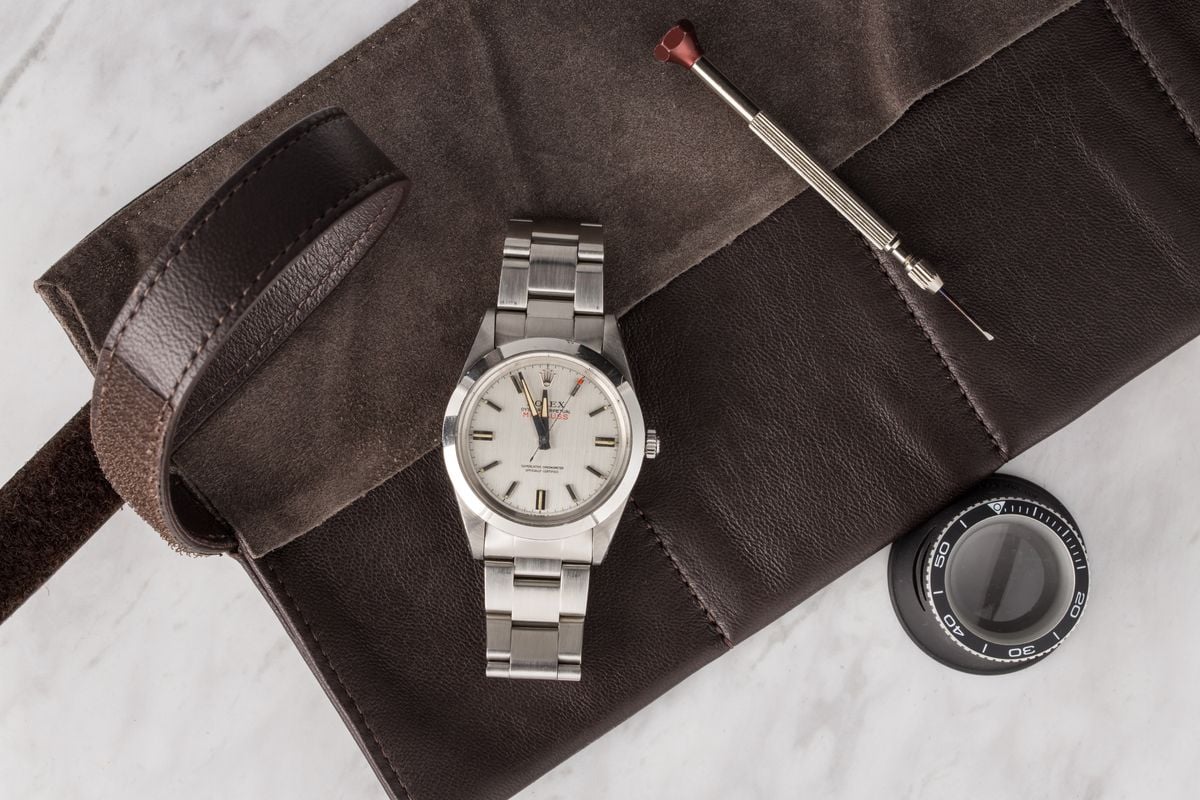
A Rolex watch produced during the 1980s that is often overlooked is the Milgauss 1019. As the model was first introduced at the beginning of the 1960s and remained in production until the late 1980s, it often gets forgotten about by collectors. However, the reference 1019 is a decidedly vintage timepiece and one of just three Rolex Milgauss references ever produced. Offering impressive magnetic-resistance and undeniable vintage charm the reference 1019 Milgauss will appeal to serious collectors who appreciate a watch with an interesting story to tell.
The reference 1019 was produced until around 1988 when the series was discontinued entirely. It wasn’t until the ref. 116400 was released two decades later that the Milgauss made its return to the market. Ref. 1019 features modest styling with a case measuring 38mm in diameter (up 2mm from 36mm to accommodate the soft-iron Faraday cage within), a smooth bezel, and a steel-on-steel finish. The watch is anti-magnetic up to 1,000 gauss and is powered by self-winding technology. This feature set was carefully designed to suit those who work around highly magnetic fields, such as scientists and powerplant workers.
Case Size: 38mm
Materials: Stainless steel
Dial: Black w/ white gold markers; Silver w/ white gold markers (no-lume “CERN Dial” variations)
Bezel: Fixed; Stainless steel w/ smooth finish.
Crystal: Acrylic
Movement: Cal. 1580
Bracelet: Oyster Bracelet
A relatively small number of Rolex Milgauss 1019 watches were produced, despite the model’s incredibly long production run of almost 28 years. Despite being produced throughout the 1980s, the reference 1019 itself actually dates back to the 1960s and is an outright vintage Rolex tool watch. Consequently, reference 1019 watches are rare, with prices ranging from around $25k to over $30k on the pre-owned market.
Rolex Date 15053 – Engine-Turned Bezel
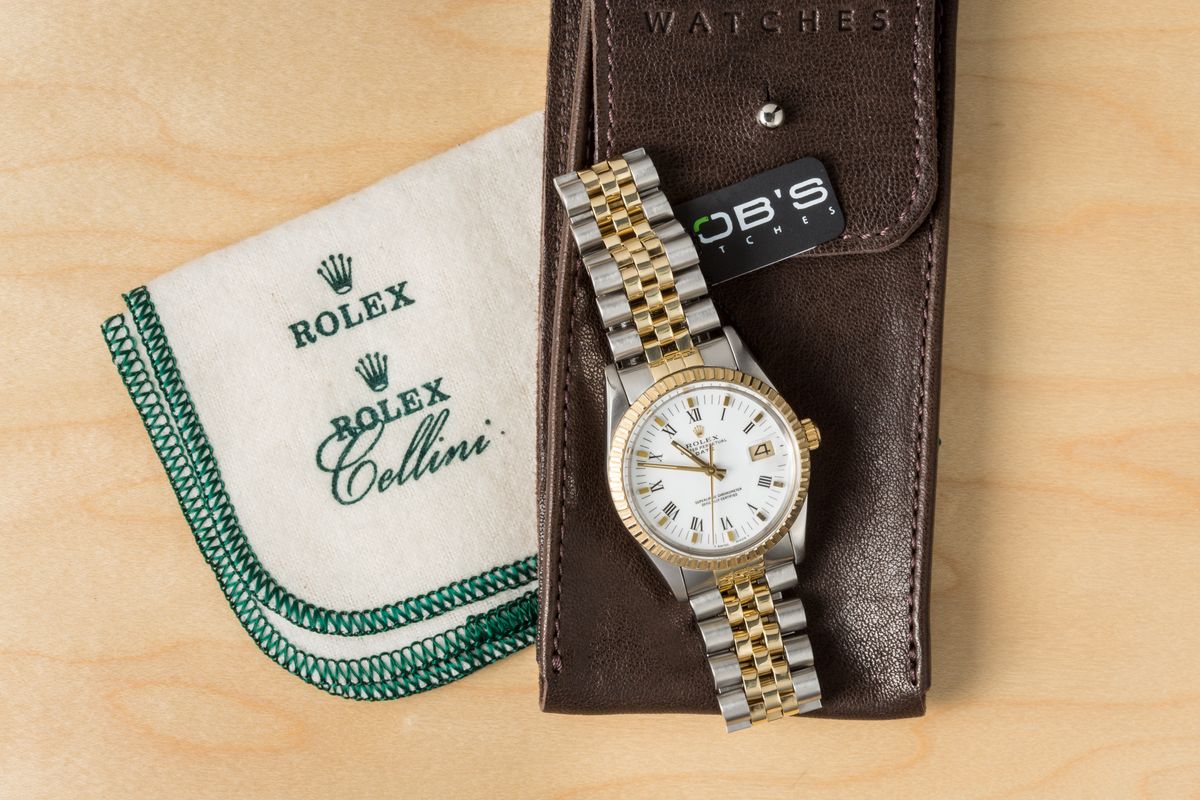
Rounding out our 1980s Rolex watches guide is the beloved Oyster Perpetual Date. Like the iconic Datejust, the Date is water-resistant, operates on an automatic self-winding movement, and features the brand’s signature jumping date mechanism. However, what sets the Date 15053 apart is a slightly smaller 34mm case paired with an engine-turned bezel in solid yellow gold. Sill a man’s watch, but with a case diameter versatile enough to be worn by almost anyone, the Rolex Date ref. 15053 oozes vintage charm, while still being perfectly suited for everyday use.
The 34mm Rolex Date has been in production for decades and still remains a part of the brand’s collection today. However, no other edition of the model embodies the essence of 1980s timepiece aesthetics quite like the ref. 15053 with its two-tone case finish and solid gold engine-turned bezel.
Case Size: 34mm
Materials: Stainless steel and 18k yellow gold
Dial: Multiple dial options available
Bezel: Fixed, 18k yellow gold, Engine-turned style
Crystal: Sapphire w/ Cyclops magnification lens
Movement: Cal. 3055
Bracelet: Oyster or Jubilee Bracelet
When it comes to affordable, entry-level 1980 Rolex watches, the Oyster Perpetual Date ref. 15053 is hard to beat. It averages around 4K on the pre-owned market and offers Rolex’s iconic two-tone styling at a significantly lower price relative to comparable 36mm Datejust watches.
Final Thoughts
If you’re like many luxury watch enthusiasts, the history of a timepiece is just as important as its feature set, and the 1980s Rolex watches included in this guide do not disappoint. Whether you’re searching for a traditional tool watch in stainless steel or a luxurious solid gold dress watch, there is a Rolex from the 1980s to suit every wrist and budget.

